Make This Amazing Maple Macchiato at Home
How to make yourself a Macchiato, Cappuccino or Latte at home without an espresso machine. Save money and time by making these at home while also upping your coffee cred! Here’s one of my favourite espresso recipes for a Maple Macchiato.
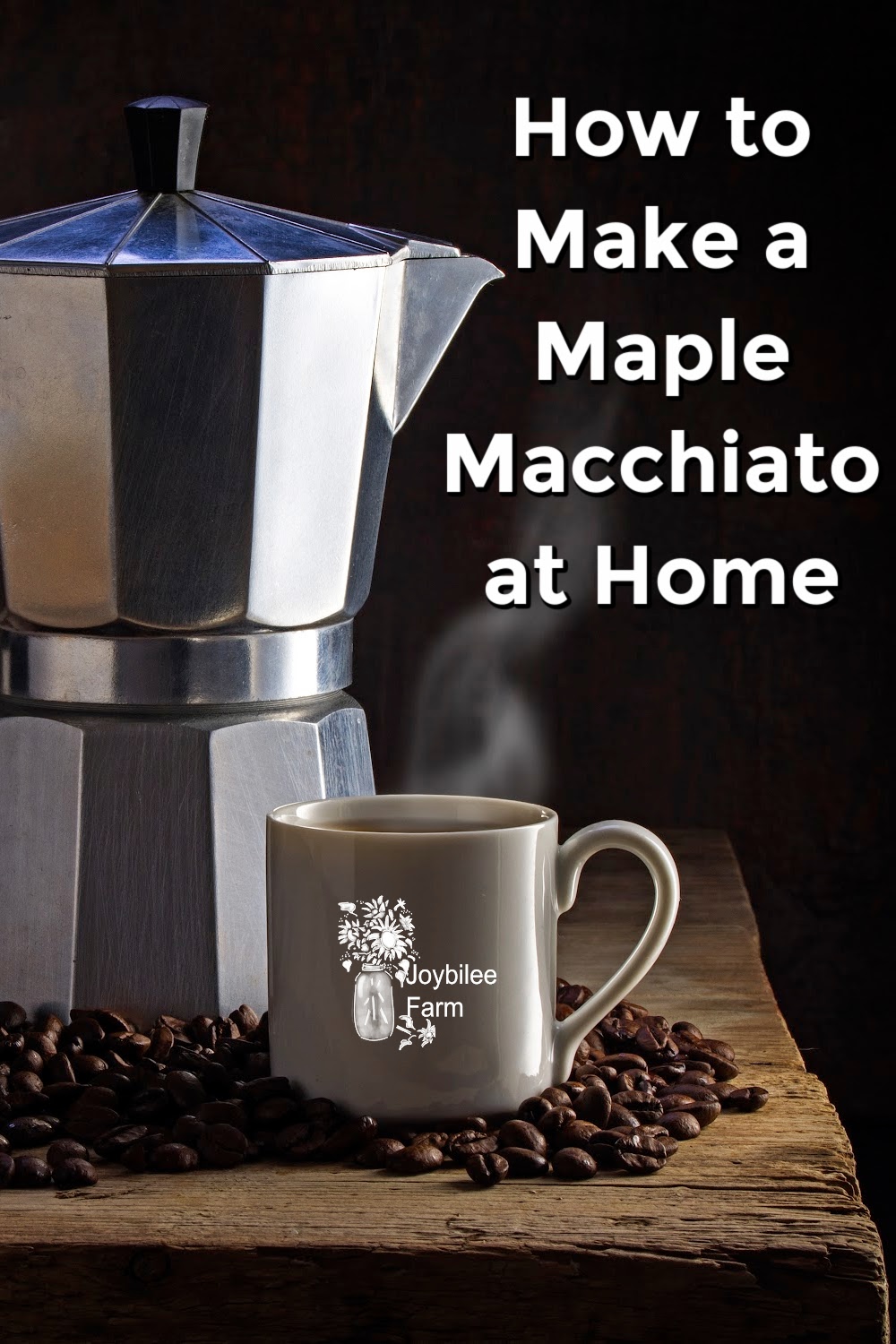
Cabin Fever? Make this amazing Maple Macchiato at home – for 2.
Have the icy roads, snow, wind, and just plain bad weather got you housebound? Feeling the pain of cabin fever? Time for a timeout? Make this amazing Maple Macchiato at home. It’s better tasting and better for you than running out to St**b*cks. Then grab a friend or a book (sometimes that’s the same thing), and sip some JOY in a mug. It will lift your mood with each luxurious taste and you’ll be ready for more of the day.
Espresso – What you need to know for Macchiatos, Cappuccinos and Lattes
First a primer on the nuances of cappuccino, latte, and Macchiato.
While these are the names of my llamas, that wasn’t quite what I was referring to.
All three are made with milk – I prefer raw goat’s milk – whole, and unhomogenized. You may use the kind of milk you prefer in this recipe.
All three are made with a shot or two of espresso.
A latte is made with steamed or heated milk. And both a cappuccino and a Macchiato are made with heated and foamed milk.
To make a latte, put a shot of espresso in the bottom of the mug. Pour the steamed, heated, slightly frothy milk on top. Done. You can add cinnamon, real maple syrup, flavoured syrup, cocoa, or just enjoy it plain.
If you are making a cappuccino you put the coffee in the mug and then add the heated, very foamed milk on top.
If you are making a macchiato you put the steamed-very-foamed milk in the mug first, and then pour in the espresso shot. When made this way, you can create pictures in the foamed milk with the way that you drizzle in the espresso.
Now you know the difference. So when you make yourself a Maple Macchiato you need espresso, heated and foamed milk (of your choice), and maple syrup. It’s a simple recipe and simply fabulous taste. You’ll feel rich as you enjoy every sip.
Let’s make espresso on the stovetop for your Maple Macchiato
To make the espresso, you can use your fancy-pants-espresso-machine (my son has one) with the steam valve, and the smoke and mirror shine. Or you can use a Moka pot on the stovetop. That’s the way I love to make it. The finished product is slightly different and I prefer my way – it’s a little less bitter, and a little more mellow to my taste. A Moka pot will make 4 shots of espresso, enough for 4 servings of this recipe. Make the full 4 servings.
First of all, really good espresso is made with freshly ground coffee. When using a Moka pot instead of an espresso machine, the coffee should be a coarser grind. Espresso machines use coffee that is ground to a fine powder, but that will go through the holes of the Moka pot filter and make a more bitter coffee. So grind it coarsely. If the power is out, use a hand grinder, with grinding stones like this one.
How to use a Moka Pot to Make Espresso for your Maple Macchiato
- Fill your Moka pot with filtered water, just up to the steam valve.
- Put the coffee filter basket in the pot, over the water.
- Fill with freshly ground coffee. Don’t pack the coffee down. You want to allow space for the water to trickle through the grounds.
- Screw the top onto the bottom of your Moka pot.
- Place on your stovetop.
Turn on the stove, just hotter than medium heat. You’ll want to use a high enough heat that the water boils and steams, but not so much that it just steams and escapes. You need to build up pressure in the bottom of the pot so that it forces the water up through the coffee filter. The espresso will boil up the centre spout and spray into your top reservoir. If done properly there is a tiny amount of water still left in the bottom reservoir, and the top is filled with black espresso with a caramel sheen. This is the delicate part. On my electric stove, this is achieved by putting it on the burner with the burner set at 5 o’clock – and takes about 10 minutes. It’s a bit trickier on a wood stove or a gas burner. You’ll be able to do it perfectly every time with a little practice.
You’ll want to heat your milk on the stovetop at the same time as you are making your espresso, but you’ll only want the milk to steam. You don’t want it to burn or boil over. I heat my milk at a lower temperature than the coffee. When heating it on the top of my wood cookstove I move it over the oven and open the oven door to get the optimal heat. Yes, it’s an art more than a science.
Frothing the Milk for Macchiatos, Cappuccinos, and Lattes
Once your milk is heated, pour half the milk out of the stainless steel jug that you heated the milk in, and into a mug to hold it. Using a battery-operated milk frother, beat the milk left in the stainless steel jug until it is doubled in volume. Pour this frothed milk into a mug. Froth the second portion of milk in the stainless steel jug. Pour this into a second mug.
Pour ¼ to ½ of the coffee from the Moka pot into each mug, over top of the frothed milk. Take 1 to 3 tsp. of maple syrup and drizzle the syrup over the top of the foamed milk. The syrup will make your Maple macchiato sweet, so only use enough maple syrup to your taste.
Serve immediately.


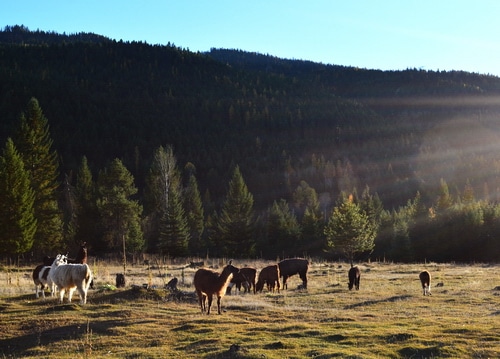
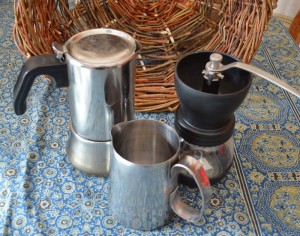
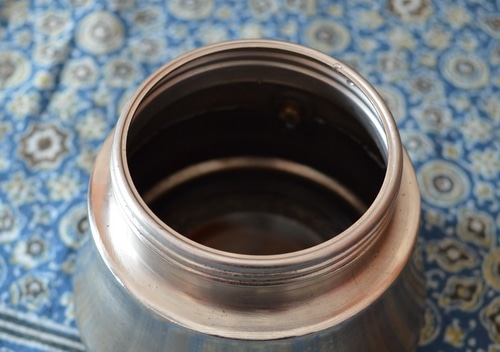
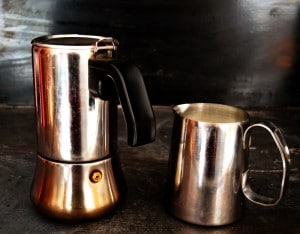


oh that would be so good! Maple everything til its gone!